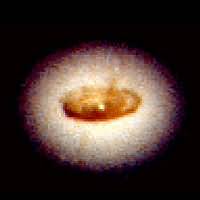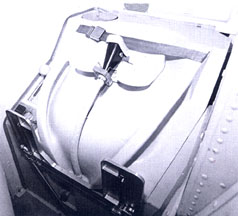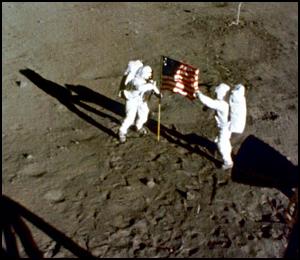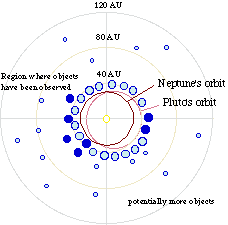Quickie Questions - Phascinating Physics - Particle Physics
| Date Answered | Questioner (age, location) | Question | Answer |
|---|---|---|---|
| January 14, 2010 | joshua (age 10, michigan) | listen up you people ! Is it possible that a proton would push away a positron answer the question I want results | That anti-electron particle is called the positron. It is the same size and weight as an electron, except it has an opposite charge. Altough the rules for the interaction between matter and antimatter are very complex and still not completely known, it is a basic principle that particles with the same charge will reject each other. |
| October 16, 2009 | Leonora (age 39, Philippines) | what are the model of atom? | In classical physics, the electron rotates around the nucleus following the Bohr "planetary model". In quantum physics, the electron is not just an electron any longer, it is a wave instead. |
| September 19, 2008 | ANSEL (age 17, INDIA) | What is LARGE HARDON COLLOIDER(LHC)? | The Large Hadron Collider (LHC) is the world's largest and highest-energy particle accelerator complex. Its main purpose is to explore the validity and limitations of the Standard Model, the current theoretical picture for particle physics. |
| August 14, 2008 | Larry (age 21, Calif) | What is the name of the particals that come from the sun and go through the earth with out us realizing it? | Neutrinos are elementary particles with no electric charge, traveling close the the speed of light and are able to pass through ordinary matter almost undisturbed. |
| January 2, 2008 | Susan (age 10, China) | What is the size of an electron, proton and neutron? | The mass of an electron is 9.10938188 x 10-31 kilograms. Neutron and proton are nearly equal in size, with masses of 1.6726231 x 10-27 kg for the proton, and 1.6746286 x 10-27 kg for the neutron. |
| August 21, 2007 | ARUSHI (age 16, INDIA) | what are quantum numbers? | Quantum numbers describe conserved quantity in the quantum system. They often describe specifically the energies of electrons in atoms, but other possibilities include angular momentum, spin etc. Each electron has a set of four numbers, called quantum numbers, that specify it completely. |
| August 6, 2001 | Basilio (age 16, Texas, USA) | What is cold fusion? | Fusion reactions are the source of the Sun's energy, and result from two light atomic nuclei combining to form an nucleus with a higher atomic weight. When this happens, the resulting heavier nucleus weighs slightly less than the sum of the two lighter nuclei, and the leftover mass is converted to energy. This process releases a huge amount of energy, but the reaction only occurs in high-temperature, high-pressure environments. In theory, cold fusion is a fusion reaction that does not require such high-energy environments to start it. If cold fusion could be proven to occur, it would be a great way to make energy, but unfortunately most scientists don't believe cold fusion actually works. The issue is still under debate, but most evidence seems to suggest that cold fusion does not work. |
| June 22, 1999 | Teressa (age 12, Alaska) | If light is not made of matter, how can gravity effect it? How can it be sucked into black holes if it has no mass? | Photons of light are affected by gravity because gravitational fields change the shape of space-time. The curvature of space-time causes a beam of photons to bend. A black hole is very dense, and has a very strong gravitational field. This warps space-time greatly, bending the light inward. In fact, the light is bent so severely that it cannot escape. |
| May 24, 1999 | Steve | What is hypercharge? | The hypercharge of a subatomic particle is the sum of its baryon number and its strangeness. Strangeness and the baryon number are properties of subatomic particles. Since strangeness and baryon number are conserved, the hypercharge is conserved as well. |
| May 19, 1999 | Anna (age 16, Pennsylvania, USA) | What is a pi-meson? | A pi-meson, or pion, is a sub-atomic particle composed of a quark, and anti-quark, and gluons. These particles are now considered the building blocks of the Universe. (Atoms were originally thought to be the building blocks.) |
| April 1, 1999 | Bmud (age 14, North Carolina, USA) | Is it true that atoms are made of smaller particles like 'gillims' or something like that? My science teacher doesn't know about it and needs proof. | There are a number of subatomic particles; I am guessing you are asking about gluons. Gluons are the force particles which hold quarks, another subatomic particle, together. |
| November 19, 1998 | Cathryne (age 15, Massechusetts, USA) | What is the weight of a gamma ray? What is its charge? | Gamma rays are photons, which means they have no mass and no charge, since they have no protons, neutrons, or electrons. |
| March 17, 1998 | Jesse (Michigan, USA) | I was wondering about the string theory. What is the basis of this theory? How much is know about it, and is there any evidence? | Within the last 20 years, thestring theory has become the leading theory to describe the fundamental particles and forces in nature. The string theory is based on the premise that at an extremely small scale, particles are actually one dimensional extended objects. All objects such as quarks are made up of these strings. Different objects appear depending on the movement of the string particle. As of yet, there is no evidence for or against this theory, but hopefully soon results from experiments using large particle colliders may confirm or disprove this theory. |
| January 5, 1998 | Mike (age 38, Texas, USA) Antonio (age 14, Florida, USA) |
What is a quark? How can their existance be proved? What's the difference between all kinds of quarks such as the top quark, bottom quark and all the others? | Quarks are the particles which make up protons and neutrons. To find quarks, physicists smashed a proton and antiproton together. This caused them to break into bits and fly off in different directions. The particles left trails, which were analyzed by computer. Although we can't see quarks, we can recognize their trail, or "signature." There are six quarks, which come in pairs: Up/Down, Charm/Strange, and Top/Bottom. The first half of each pair has a charge of +2/3, and the second half a charge of -1/3. All the quarks also have different masses. Up and Down are the lightest, while Top is by far the most massive. |
| January 5, 1998 | Jonathan (age 11, Ohio, USA) | Is there really such a thing as antimatter, or is that a myth? | Antimatter does exist, and has been produced in laboratories. Anti-particles have opposite properties from their corresponding particle. For example, the positron (with charge +1) is the antimatter particle corresponding to the electron (charge -1). When a particle and its antimatter particle collide, they both disappear, leaving behind a burst of energy. |














